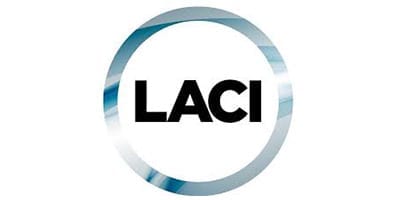How to Curb Emissions From Trucking
Did you know that the greatest single source of air pollution in Los Angeles comes from the trucks, trains, and ships that bring goods in and out of our Ports of Los Angeles and Long Beach, that 40% of all the goods that come into the US come from these ports, and that one out of every six jobs in the region is related to goods movement?
Answering the question of how we get more zero emission trucks on our freeways to lower greenhouse gas (GHG) emissions and clean the air is particularly important for the Los Angeles region. The unintended consequence of this economic activity is hurting communities living near the ports and along the freeways that are disproportionately affected by poor air quality. At the same time, the goods movement industry is vital to the region’s economy and represents a large portion of vehicles on the road. Medium- and heavy-duty trucks comprise the second largest categories of GHG emissions in the transportation sector and goods movement represents the region’s largest source of air pollution.
Lowering GHG emissions and air pollution from goods movement is a key focus of the Transportation Electrification Partnership.
Lowering GHG emissions and air pollution from goods movement is a key focus of the Transportation Electrification Partnership—an unprecedented multi-year partnership among local, regional, and state stakeholders, convened by LACI, to accelerate progress towards transportation electrification and zero emission goods movement in the Greater Los Angeles region in advance of the 2028 Olympic and Paralympic Games.
In 2018 the partnership developed its first 2028 Zero Emissions (ZE) Roadmap, which set goals for regional transportation electrification and statewide ZE goods movement—goals like 25-50% of all medium-duty delivery trucks in LA County to be electric, and 10-40% of heavy-duty regional drayage truck to be ZE, all by 2028.
Where Are We and Where Do We Need to Go
To understand where we are with ZE goods movement, from the manufacturers making ZE trucks, the trucking companies buying them and utilities and charging infrastructure companies installing chargers, LACI first needed to level set on the state of the complex needs of the whole goods movement ecosystem.
Together with the California Air Resources Board (CARB), the Ports of Los Angeles and Long Beach, and the California Energy Commission (CEC), LACI issued a Request for Information (RFI), asking medium- and heavy-duty truck manufacturers, EV supply equipment manufacturers, EV charging station networks, fleet operators, and fleet charging companies about their ZE goods movement plans, in order to:
- Understand the current state and future plans for ZE heavy duty truck technologies.
- Understand needed infrastructure, like chargers, and concepts for pilots.
- Understand where synergies and partnerships might exist between organizations for ZE truck deployment, infrastructure, and concepts for pilots.
- Inform CARB, the CEC, and other policymakers on how to design future incentive programs to help, for example, manufacturers commercialize ZE truck models.
What We Learned
LACI received 39 responses from a wide variety of companies including multinational corporations that have led the industry for decades as well as California-based startups innovating from the ground up.
The top barriers for battery-electric and fuel cell trucks alike are the high upfront capital costs and limited availability of charging infrastructure.
We learned that:
- For medium-duty vehicles, the respondents are offering and/or have planned five times as many battery-electric vehicles as fuel cell vehicles.
- For heavy-duty vehicles, the respondents have planned increases in both battery-electric and fuel cell offerings in the next 1-3 years.
- The top barriers for battery-electric and fuel cell trucks alike are the high upfront capital costs and limited availability of charging infrastructure. Respondents focusing on battery-electric technologies also pointed to supply chain limitations, the long and unpredictable timeline for installing and connecting charging infrastructure to the electricity grid, and the lack of EV knowledge among potential customers. Fuel cell technology specialists identified the long timelines needed to develop and certify hydrogen trucks and fueling stations.
- As trucking companies plan to transition their operations to ZE, many fleets that use hub-and-spoke distribution methods will need to coordinate their medium-duty solutions with their heavy-duty solutions based on site needs and operational challenges. This means that we can’t just focus on medium-duty (like vans for deliveries in cities) or heavy-duty (like large trucks moving containers across the region), but we need to focus on medium- and heavy-duty trucking at the same time in order to transition the whole goods movement system to ZE.
- 7 (6 battery electric; 1 fuel cell) truck manufacturers said they would be ready to participate in a future pilot program to deploy 50-100 ZE trucks in the greater Los Angeles region.
- Several exciting pilot project concepts were suggested to ensure that adequate charging infrastructure is available to truckers traveling from the ports to the distribution hubs in the Inland Empire, a region east of the Ports of Los Angeles and Long Beach.
Where Do We Go From Here? A Seamless Corridor Approach
LACI and the Transportation Electrification Partnership members recommend a holistic approach to accelerating ZE medium- and heavy-duty trucks and infrastructure.
Based on the findings, LACI and the Transportation Electrification Partnership members recommend a holistic approach to accelerating ZE medium- and heavy-duty trucks and infrastructure. The partners suggest a pilot framework to establish heavy-duty drayage routes supported by medium-duty distribution hubs serving as both cargo points and charging stations. Additional charging options would be established at third-party logistics yards, truck stops and/or via mobile zero emissions charging solutions, adding up to a seamless electrified corridor along the lower I-710 freeway and providing truck operators with the confidence needed to invest in zero emissions solutions.
Given the market share of goods traveling along the 710 freeway, concentrating investment in this type of comprehensive pilot would not only enable the Los Angeles region to meet its ZE goods movement goals, but could serve as the lynchpin to transitioning the regional movement of goods at ports and cities across the country. LACI is working now to identify funding for this pilot project from a number of potential sources.
In September 2019, LACI will announce the 2028 Zero Emissions (ZE) Roadmap 2.0, with revised target ranges for goods movement by the time the world arrives in Los Angeles for the 2028 Olympic and Paralympic Games.
Good to Know: Other ZE Transportation Pilot Projects
In addition to the potential pilot project for goods movement along the lower 710 freeway, LACI and the Transportation Electrification Partnership are working on a last-mile solution—the Zero Emissions Mobility and Community Pilot Project Fund—to ensure that every community benefits from the green economy, and neighborhoods that are disproportionately affected by poor air quality can work to clean the air around them. The path to a ZE future means addressing community needs as well as key technology, business model, and educational challenges. Pilot projects as part of the ZE Mobility and Community Pilot Project Fund will be deployed in late 2019 and developed hand-in-hand with selected disadvantaged communities. Lessons from these projects will be shared and used to inform new projects and policy recommendations going forward.



